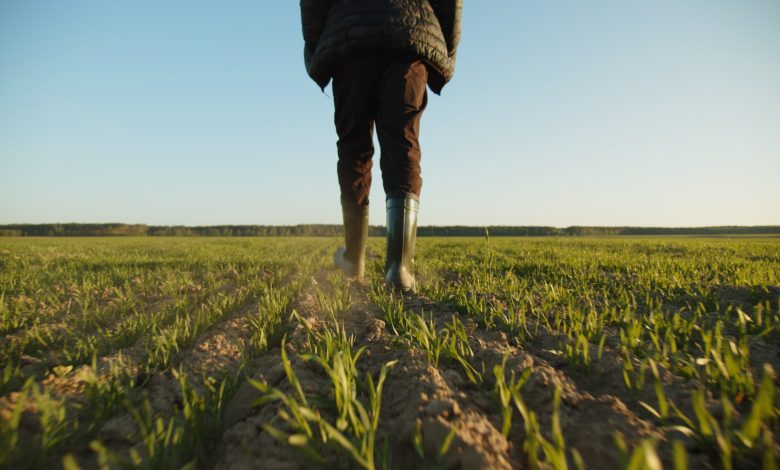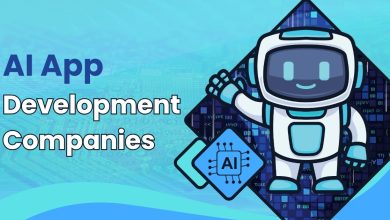
Industry-leading innovation expert Ashleigh Patterson from ABGi, a consultancy that supports businesses in securing R&D tax credits and government incentives, gives insight into the strides taken to boost British farming with new technologies
The UK government has placed its bets on AI being one of the primary instigators of growth in the UK across a huge variety of sectors. Earlier this year, the UK government revealed the AI Action Plan – a policy roadmap targeting sovereign AI development by 2030, embedding AI across public services, stimulating growth and more.
In September of this year, the North East was in the spotlight thanks to an investment announcement naming it the UK’s flagship AI hub. In total, that means £30b of investment in infrastructure by OpenAI, NVIDIA, and British firm Nscale.
The scale of this AI investment is unprecedented in the UK, and will have a huge knock-on effect for less-obvious UK industries, which are already starting to see the benefits of AI in economising production and increasing efficiency.
Agriculture is one such sector where AI could be set to play a transformative role, particularly as UK farming has faced ongoing disruption over recent years – including rising labour shortages and almost 6,400 agricultural firms closing within the last year.
Agricultural industry innovations
There is a lot of innovation taking place in the agricultural industry. One exciting area is the use of precision technologies in farming, known as ‘precision agriculture’. This involves the use of tools such as GPS, sensors, drones, and data analytics to monitor and manage crops and livestock with high accuracy.
In crop farming, these technologies help optimise inputs like water, fertilisers, and pesticides, while in livestock farming, they are used to track animal health, monitor feeding patterns, and improve breeding efficiency.
Another exciting area is the use of robotics and automation in farming. One notable advancement is in the harvesting of crops, where machines are increasingly replacing manual labour.
Mushrooms, for example, are traditionally picked by hand, due to the delicate nature of the mushroom caps. Unlike most fruit and vegetables, they have no protective outer skin, so are prone to damage and bruising.
However, advanced robotic systems now incorporate advanced sensors, soft-touch grippers and machine vision to identify and gently pick mushrooms without causing damage. This signals a massive advancement within the mushroom industry!
Innovations in sustainability are also transforming agriculture. One example is the Lighthouse Farm model led by Professor Rogier Schulte. A standout case is a farm in Latvia with 1,000 dairy cows which converts manure into biogas, electricity to power 2,500 homes, and heat to run fish farming – ultimately producing high-value caviar as the primary output.
AI-led advancements
AI-powered predictive tools show great promise in crop management, with systems that could forecast disease outbreaks, pest infestations, or drought stress weeks in advance by analysing weather patterns, soil conditions and satellite imagery – enabling farmers to take action before problems occur.
Further down the line, AI is expected to enhance supply chain efficiency, helping coordinate food production and distribution by predicting market demand more accurately. As these innovations develop, farms of the future will increasingly rely on AI to guide key decisions – from planting and irrigation to animal care and food delivery.
In the coming years, AI-driven precision irrigation systems are likely to become more common too. These tools make real-time decisions on when and how much to water, based on data from field sensors and weather forecasts. This helps farmers reduce water use while maintaining yields – a vital improvement in the face of climate change.
The future of the agricultural industry
The agricultural industry is set for major transformation driven by technology and sustainability demands. Nationally, the sector will become more tech-enabled and data-driven, boosting productivity and resilience. Controlled environment agriculture, such as indoor vertical farms, will be on the rise.
New facilities in the UK, like Fischer Farms in Norfolk, show how stacking crops under LED lighting can dramatically increase output per square foot. Traditional farms will also continue adopting precision farming techniques, and by 2030, a significant majority of UK farms are expected to use satellite monitoring, AI-based decision support, and real-time sensor data to improve yields.
Locally, farmers will benefit from AI-powered tools that tailor practices to their specific conditions. Advanced forecasting and sensor networks can provide granular insights about each field’s needs, enabling hyper-local management. This localised precision improves profitability and can regenerate land by avoiding overuse of chemicals.
We’ll also likely see growth in local agri-tech hubs and alliances, with urban vertical farms working with rural growers to share knowledge and balance supply. Local food production, such as community greenhouses or smaller vertical farms, might become more common, bringing fresh produce closer to consumers and creating local jobs in agri-tech.
If AI is implemented correctly, the future agricultural industry looks to be more productive and locally integrated.
National output could grow through high-tech farming, while local communities benefit from greater food self-sufficiency. The coming years will likely bring a more converged food system, where technology, energy, and agriculture work hand-in-hand to feed the population sustainably.
As new technologies and possibilities are unlocked alongside the rapidly growing sophistication of AI, UK agriculture will be keeping a close eye on how it can further benefit from new technologies. UK agriculture deserves all the support it can get, and AI may yet be the key to accessing it.



